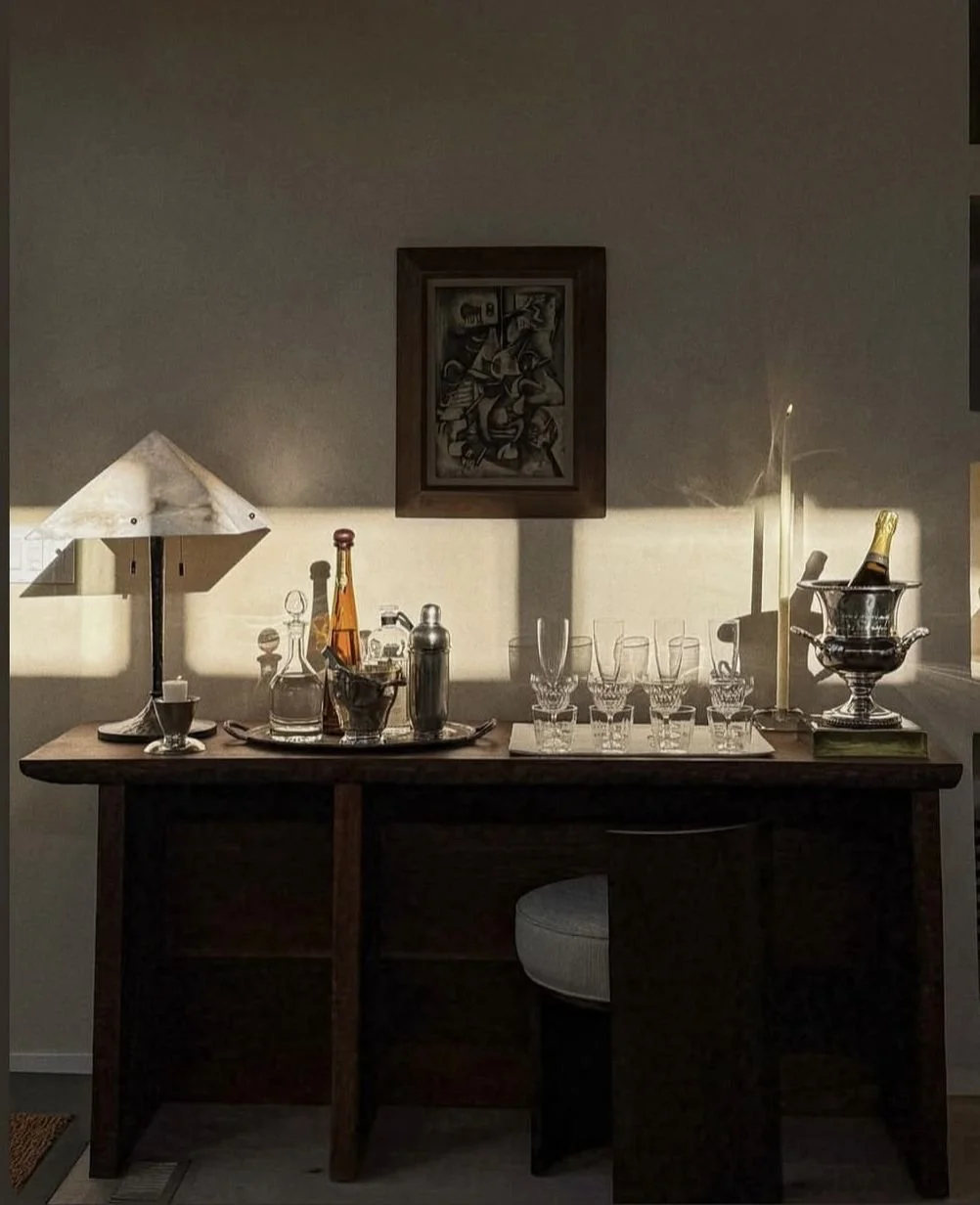How To Curate a Home That Carries Your Voice
What I love most about interiors is that you would ’t have to say a thing before the person walking into that room gets a brief sense of who you are.
They simply need to step into your space and within seconds, a room reveals how you curate your life.
Most people assume well decorated room is about having luxurious furniture or expensive finishes.
Absolutely not. It’s about congruence.
The story your environment tells has to match the woman you are or the version you dream of becoming.
If you’re stepping into your new era -your high-standard, no-nonsense, fiercely (or soft-girl) ambitious era, then your space should be in conversation with that, not contradicting it.
Think about the unconscious messages your environment sends:
Is your home suggesting you rush through life, or that you choose what deserves your time?
Does it showcase the woman you’re growing and thriving into, or the version of you who was simply surviving?
Is there intention, or is there convenience?
Does it encourage you to rise,or does it pull you back into habits you’ve outgrown?
A room can say: “She’s clearly a foodie who enjoys travelling and tasting different cuisines from different cultures just from the books on her coffee table”
Or it can say: “She hasn’t rearranged her life since 2018.”
The walls always speak. The question is: do they speak for you…or over you?
Designing With a Story
Thankfully, Pinterest saves the day with its plethora of inspiration and ideas, but there’s a downside to that when it comes to creating a narrative for your home.
You can go online, order a rug, place two lamps on either side of it, and call it a day.
The bar is low.
But designing with a story in mind takes interior design to a different level.
Narrative design is when you treat your home as a story you’re authoring, not a Pinterest board you’re copying.
Every piece of glassware, every cushion, every placement becomes a sentence in that story. And suddenly, the space feels like you and not like a showroom.
When you design with narrative, you stop chasing trends and start curating identity. You start buying pieces because:
They connect to a memory, sometimes sentimental
They reflect a personal value.
They hint at a life you’re building.
They anchor a standard you refuse to drop.
They tell people something you no longer feel the need to say aloud.
For example:
A vintage ashtray from Paris isn’t just décor, it’s a story of a woman who walks through the world with curiosity, who appreciates craftsmanship, who interrupts her own routines by catching a last-minute flight somewhere for inspiration
A sculptural chair isn’t just seating, it’s recognition that beauty is functional, that your home exists to stimulate you, not pamper guests
A marble tray with your everyday pieces, whether it be jewellery, keys, or fragrance, is not just a way of organising your life. it signals that this is a woman who has rituals and treats those rituals something sacred
Creating a narrative throughout your home is more than the design. It’s about creating depth.
The Shift Toward Meaningful Interiors
Gone are the days when we would fawn over the chequered tiles and opulence from the houses we would see on Keeping Up With The Kardashians Season 5.
There’s a reason why some homes feel magnetic, like you could knowingly outstay your welcome without feeling guilty and its not because the sofas cost more than a mortgage in Hampstead Heath. It’s because every sqaure foot tells a story.
Every corner has a job.
Every item earns its place. There is no emotional clutter, no dead energy, no placeholders.
And this narrative sharpens the identity within you. It’s impossible to be mediocre in a space that demands excellence.
Here’s what meaningful interiors prioritise now:
Pieces with provenance: Not necessarily antique, just items with a backstory. Think, a hand-me-down from your grandma
Texture as personality: Linen over polyester, stone over plastic, glass over acrylic. Material says far more about you than colour ever will.
Functional glamour: Beauty that does something. A lamp that creates atmosphere. A desk setup that makes focusing on work an interesting spectacle.
Emotional cues: Ritual corners, reading chairs, a kitchen that makes you want to cook instead of order.
A sense of authorship: No copy-and-paste boards. No algorithm homes. Just a woman shaping her life with her hands.
Meaningful interiors are not about showing off. They’re about showing up.
The shift is happening because women are tired of performing lifestyle online. The real luxury in curating a home that carries your voice happens so they cam live it offline.
Finally…
Every morning, your home is saying:
“This is who you said you wanted to be. Are you showing up?”
And every evening, it’s saying: “This is the life you’ve chosen. Is it still aligned?”
A well-designed home doesn’t just impress others, it holds you accountable.
If you’re stepping into a new standard, start with the environment where you spend the most time with yourself.
Upgrade your space, and your life has no choice but to follow.


